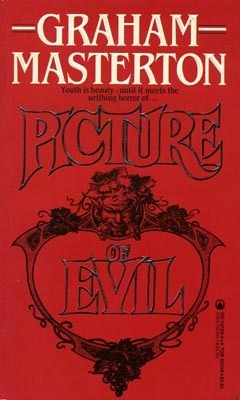
Charnel House
Book Description
Beneath the crumbling façade of a forgotten chateau lies a horror more grotesque than flesh could imagine. When a group of unsuspecting souls stumbles into this charnel house, the walls whisper dark secrets of past atrocities, awakening an insatiable evil. As friendships fracture and trust dissolves, desperate choices pit each individual against not only the malevolent force lurking within but also their own deepest fears. The line between survival and sacrifice blurs, leading to a spine-chilling climax that will leave hearts racing. Can they unify to escape the clutches of this abomination, or will they become the next victims in its insatiable hunger?
Quick Book Summary
"Charnel House" by Graham Masterton is a supernatural horror novel set within the decaying walls of a remote French chateau. When a group of travelers inadvertently takes shelter in the chateau, they unknowingly awaken an ancient, malevolent force with roots in Native American lore. As the building reveals its dark secrets—rooms filled with remnants of unspeakable atrocities—the visitors are subjected to psychological and supernatural torment. Trust erodes as the evil entity manipulates their fears, turning them against one another while feeding on their despair. Plagued by hallucinations and forced to confront their deepest traumas, the group struggles to cooperate and survive. Masterton weaves themes of sacrifice, betrayal, and the limits of human endurance into a tale that relentlessly builds tension, culminating in a shocking fight for survival against an insatiable demonic presence.
Summary of Key Ideas
Table of Contents
The Corrupting Nature of Evil
A group of friends and acquaintances, stranded by accident in the rural French countryside, seeks refuge in a seemingly abandoned chateau. Initially grateful for the shelter, the mood quickly shifts as they notice strange occurrences—whispered voices, chilling drafts, and locked doors that weren’t there before. The group uncovers macabre artifacts and signs of centuries-old rituals tied to the house’s grim past. What began as an accident soon spirals into a nightmare as the chateau traps them, demanding they confront an invisible but ever-present evil.
The Influence of History and Legacy
As tension rises, the influence of the chateau’s history seeps into the group’s psyche. The house itself becomes a character—its walls echoing with the agony of previous victims whose blood was spilled for occult purposes. Native American imagery and inexplicable symbols intertwine with European settings, hinting at a demonic force brought to France through centuries of cultural exchange. The group realizes they are pawns in a haunting that is at once uniquely American and tragically universal, driven by an ancient hunger for sacrifice.
The Fracturing of Group Trust
The malevolent entity manipulates the house’s occupants, sowing mistrust and paranoia. Each person’s fears become manifest: hallucinations, haunting whispers, and shifting walls isolate them from allies and reality itself. Long-standing friendships fracture as accusations of betrayal fly; selfish acts breed more danger. The reader sees how easily humans can be driven apart when survival is at stake, and how evil flourishes in division, using psychological terror to turn the group against itself.
Survival versus Sacrifice
Layer by layer, the chateau’s secrets unravel. Through journals and spectral visions, the survivors glimpse horrifying rituals—a blending of Native American demonic lore with French occult practices—that bound the entity to the charnel house. The group desperately tries to decipher the legends, realizing that breaking the curse will require both unity and personal sacrifice. Some members attempt dark bargains, while others face their own guilt and trauma head-on, learning that only by confronting past sins can they hope to survive.
Supernatural and Cultural Identity
In a final, harrowing confrontation, the group must choose whether to save themselves or sacrifice one for the whole. The demonic force’s power peaks as hope dwindles, pushing each character to their psychological and moral limits. Ultimately, only those who find unexpected courage and empathy can oppose the chateau’s will. “Charnel House” concludes with a brutal, ambiguous resolution, leaving survivors scarred yet alive, and questioning whether true evil ever truly dies or merely waits for its next host.
Download This Summary
Get a free PDF of this summary instantly — no email required.





